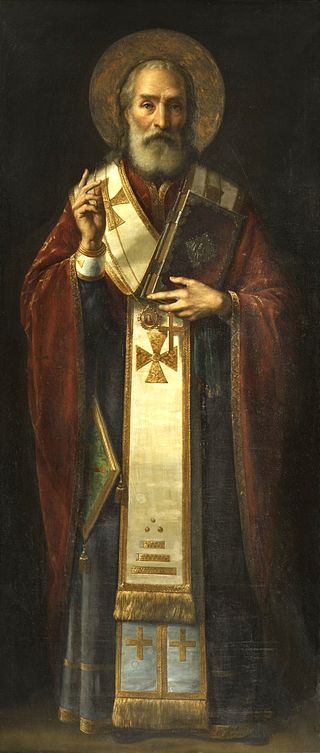December 6
The Feast of St Nicholas
Today, we have an extract from the Tudor Society “Christmas in Tudor Times” e-book, which is free for all Tudor Society members to download and read, along with the rest of the Tudor Society e-book series.

The 6th December is the Feast of St Nicholas, or St Nicholas of Myra, the 4th century Bishop of Myra (modern-day Demre in Turkey), who is the patron saint of children, as well as sailors, merchants, archers, repentant thieves, brewers, pawnbrokers and students. In medieval and Tudor times, it was traditional for a choirboy to be chosen on 6th December (or sometimes Childermas, Holy Innocents’ Day) as “Boy Bishop”. This boy would act as bishop and lead processions around communities, collect money for the church and parish funds, and lead some religious services.
As Ronald Hutton points out in his book, The Stations of the Sun, this tradition was “a reaffirmation of Christ’s own teaching about the special relationship of children to the kingdom of heaven, and of the Church’s especial respect for innocence and purity – a celebration of norms” and that it was also widespread: “it is therefore attested at every cathedral in Britain at which a medieval archive has survived.”
King Henry VII presented money to his “St Nicholas Bishop”, a boy chosen from the choirboys of the Chapel Royal, and the giving of money to one particular chorister continued on St Nicholas’s Day even after King Henry VIII banned the Boy Bishop tradition in his reign. It appears that Henry put an end to the tradition because it could be seen as mocking Church authorities and therefore the king himself, seeing as he was now Supreme Head of the Church. Although the tradition made a brief return in Mary I’s Catholic reign, it disappeared again in Elizabeth I’s reign.
The Boy Bishop tradition continues today in Hereford and Salisbury Cathedrals. At Hereford Cathedral, a teenager is elected as “Boy Bishop” from the cathedral choristers and takes his throne at the Choral Evensong service on the Sunday nearest to 6th December. Calendar Customs website explains: “His reign lasts for three weeks and in this time he plays an important part in services, wearing full episcopal regalia, in a tradition that here goes back to the thirteenth century.”
At Salisbury Cathedral, a chorister assumes the role of Boy Bishop during Evensong on the Sunday nearest to St Nicholas’s Day in a special ceremony which involves the Bishop of Sherborne giving the boy, who is dressed in replica Bishop's regalia, his staff and ring and installing him on the throne. The Boy Bishop then leads the prayers, blesses the congregation and receives the collection, as well as writing and delivering his own sermon. In 2015, 12-year-old Maddie Lyles was elected in the role and the name changed from Boy Bishop to Chorister Bishop. Salisbury Cathedral, in their announcement of her election, explained what happened after she had been elected:
“In keeping with tradition, during the service Bishop Nicholas sat bareheaded in the sanctuary whilst Maddie, bedecked in her robes and mitre, wearing her ring and carrying her staff, led prayers, received the collection, led prayers, delivered her sermon and gave the final responses. The service is a reminder to the church and clergy that they must always consider the humble and meek, in particular children. Something Maddie’s sermon addressed along with the significance of St Nicholas, who is the Patron Saint of Children.”
It is wonderful how the tradition is being kept alive today.

Another tradition associated with St Nicholas’s Day, and also Shrovetide, from Tudor times onwards is “barring out”. Schoolboys would lock their schoolmasters out of the school and take possession of the place until the schoolmaster met certain demands.
![]()
The Tudor Society has a 14-day free trial, so why not sign up at https://www.tudorsociety.com/ and find out what it’s all about.